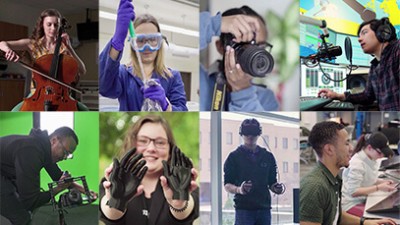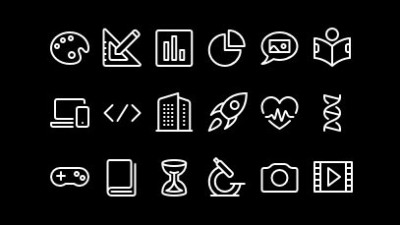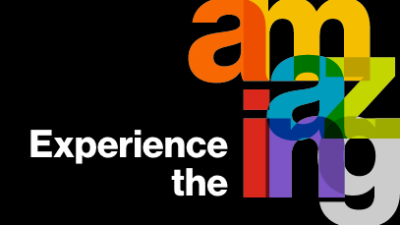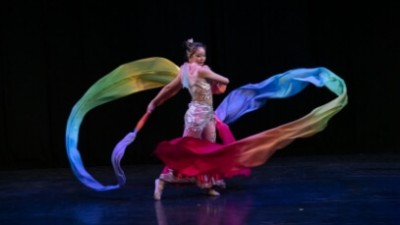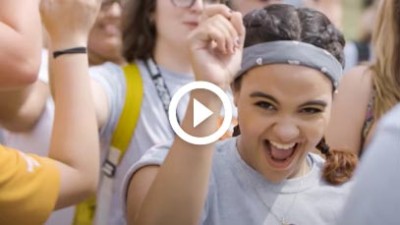Beam, C., N. F. Otani, and C. A. Linte. "Reconstructing Cardiac Wave Dynamics from Myocardial Motion Data." Proceedings of the Computing in Cardiology. Ed. Corsi, C. and Severi, S. Rimini, Italy: IEEEE, 2020. Web.
Upendra, R R., S. Dangi, and C. A. Linte. "Automated Segmentation of Cardiac Chambers from Cine Cardiac MRI Using an Adversarial Network Architecture." Proceedings of the SPIE Medical Imaging - Image-Guided procedures, Robotic Interventions and Modeling. Ed. Linte, C. A. and Fei, B. Houston, TX: SPIE, 2020. Web.
Hasan, SM K. and C. A. Linte. "CondenseUNet: a memory-efficient condensely-connected architecture for bi-ventricular blood pool and myocardium segmentation." Proceedings of the SPIE Medical Imaging - Image-Guided procedures, Robotic Interventions and Modeling. Ed. Linte C. A. and Bei, B. Houston, TX: SPIE, 2020. Web.
Jalalahmadi, G., M. Helguera, and C. A. Linte. "A Machine Leaning Approach for Abdominal Aortic Aneurysm Severity Assessment Using Geometric, Biomechanical, and Patient-specific Historical Clinical Features." Proceedings of the SPIE Medical Imaging - Biomedical Applications in Molecular, Structural, and Functional Imaging. Ed. Kroll A. and Barjor G. Houston, TX: SPIE, 2020. Web.
Li, M., et al. "Noise Reduction for the Inverse Solution for One-dimensional Cardiac Active Stress Reconstruction." Proceedings of the SPIE Medical Imaging - Biomedical Applications in Molecular, Structural, and Functional Imaging. Ed. Kroll, A. and Barjor G. Houston, TX: SPIE, 2020. Web.
Beam, C., C. A. Linte, and N. F. Otani. "An Implementation of Data Assimilation Techniques for Transmural Visualization of Action Potential Propagation in Cardiac Tissue." Proceedings of the SPIE Medical Imaging - Biomedical Applications in Molecular, Structural, and Functional Imaging. Ed. Kroll, A. and Barjor, G. Houston, TX: SPIE, 2020. Web.
Liu, D., et al. "Combining Statistical Shape Model and Principal Component Analysis to Estimate Left Ventricular Volume and Ejection Fraction." Proceedings of the SPIE Medical Imaging - Ultrasound Imaging and Tomography. Ed. Byrem, B. C. and Ruiter, N. V. Houston, TX: SPIE, 2020. Web.
Jackson, P., R. Simon, and C. A. Linte. "Surgical Tracking Characterization and Registration Performance Assessment for Image-guided Renal Interventions." Proceedings of the Computer Assisted Radiology and Surgery - International Society of Computer-aided Surgery. Ed. Lemke, H. U. Munich, Germany: Springer, 2020. Print.
CA, 20.Otani NF, Dang D, Beam C, Mohammadi F, Wentz B, Hasan SMK, Shontz SM, Schwarz KQS, Thomas S, and Linte. "Toward Quantification and Visualization of Active Stress Waves for Myocardial Biomechanical Function Assessment." Proceedings of the Computing in Cardiology. Ed. Corsi, C. and Severi, S. Singapore, Singapore: IEEE, 2019. Web.
Hasan, SM K. and C. A. Linte. "U-NetPlus: A Modified Encoder-Decoder U-Net Architecture for Semantic and Instance Segmentation of Surgical Instruments." Proceedings of the IEEE Eng Medical Biol. Ed. Penzel, T. Berlin, Germany: IEEE, 2019. Web.
Liu, D., et al. "Left ventricular ejection fraction assessment: unraveling the bias between area- and volume-based estimates." Proceedings of the SPIE Medical Imaging - Ultrasound Imaging and Tomography. Ed. Byrem, B. C. and Ruiter, N. V. San Diego, CA: SPIE, 2019. Web.
Zikri, Y.K. Ben, S. Mendez, and C.A. Linte. "Anatomical Based Registration of Multi-sector X-ray Images for Long Limb Panorama Generation." Proceedings of the Proc SPIE Medical Imaging: Biomedical Applications in Molecular, Functional and Structural Images. Ed. B. Jimi and A. Krol. Bellingham, WA: SPIE, 2017. Print.
Jalalahmadi, G., M. Helguera, and C.A. Linte. "A Numerical Finite Element Model to Study the Biomechanical Behavior of Abdominal Aortic Aneurysm." Proceedings of the Proc SPIE Medical Imaging: Biomedical Applications in Molecular, Functional and Structural Images. Ed. B. Jimi and A. Krol. Bellingham, WA: SPIE, 2017. Print.
Jackson, A., et al. "3D Printing for Orthopedic Applications: From High Resolution Cone Beam CT Images to Life Size Physical Models." Proceedings of the Proc SPIE Medical Imaging: Imaging Informatics for Healthcare, Research and Applications. Ed. T. Cook and J. Zhang. Bellingham, WA: SPIE, 2017. Print.
Krueger, E., et al. "An Interactive, Stereoscopic Virtual Environment for Medical Imaging Visualization, Simulation and Training." Proceedings of the Proc SPIE Medical Imaging: Image Perception, Observer performance and Technology Assessment. Ed. M. Kupinsky and R. Nishikawa. Bellingham, WA: SPIE, 2017. Print.
Shontz, S.M., et al. "High-Order Tetrahedral Mesh Generation for Cardiac Simulations." Proceedings of the International Conference on Computational Methods for Coupled Problems in Science and Engineering — Coupled Problems. Ed. M. Papadrakakis, E. Oñate, and B.A. Schrefler. Barcelona, Spain: International Center for Numerical Methods in Engineering (CIMNE), 2017. Print.
CA, Linte, et al. "Automated Reconstruction of Standing Posture Panoramas from Multi-sector Long Limb X-ray Images." Proceedings of the Proc SPIE Medical Imaging: biomedical Applications in Molecular, Structural and Functional Imaging - San Diego CA Feb. 2016. Ed. B. Jimi and A. Krol. Bellingham, WA: SPIE, 2016. Print.
CA, Linte and Ben-Zikri YK. "A Robust, Automated Left Ventricle Region of Interest Localization Technique Using a Cardiac Cine MRI Atlas." Proceedings of the Proc SPIE Medical Imaging: Image-guided procedures, Robotic Interventions and Modeling - San Diego CA Feb 2016. Ed. ZR Yaniv and R Webster III. Bellingham, WA: SPIE, 2016. Print.
CA, Linte, et al. "A Comparison Study of atlas-based 3D Cardiac MRI Segmentation: Global Versus Global and Local Transformations." Proceedings of the Proc SPIE Medical Imaging: Image-guided procedures, Robotic Interventions and Modeling - San Diego CA Feb. 2016. Ed. ZR Yaniv and RJ Webster III. Bellingham, WA: SPIE, 2016. Print.
CA, Linte, et al. "Experimental Characterization, Comparison, and Image Quality Assessment of Two Ultrasound Contrast Agents: Optison and Definity." Proceedings of the Proc SPIE Medical Imaging: Ultrasound Imaging and Tomography - San Diego CA Feb 2016. Ed. N Duric and B Heude. Bellingham, WA: SPIE, 2016. Print.
N, Ben-Zikri YK, Helguera M, Fetzer D, Linte CA and Cahill. "Comparison of Lesion-centered vs. Lung-centered Registration for Nodule Assessment from Lung CT Images." Proceedings of the Proc. IEEE Western NY Image Signal Process - Rochester NY Dec. 2015. Ed. R Ptucha, N Cahill, CA Linte and B Ghoraani. Piscataway, NJ: IEEE, 2016. Web.
S, Dangi and Linte CA. "Integrating Atlas and Graph Cut Methods for Right Ventricle Segmentation from Cardiac Cine MRI." Proceedings of the Proc SPIE Medical Imaging: Image-guided Procedures, Robotic Interventions and Modeling - Orlando FL Feb. 2017. Ed. RJ Webster III and B Fei. Bellingham, WA: SPIE, 2017. Print.
Camp, JJ, et al. "The Effect of Elastic Modulus on Ablation Catheter Contact Area." Proceedings of the SPIE Medical Imaging - Orlando, FL, Feb. 2015. Ed. Z Yaniv and R Webster. Bellingham, WA: SPIE, 2015. Print.
Bensch, A, et al. "Augmenting Real-time Video with Virtual Models for Enhanced Visualization for Simulation, Training and Guidance." Proceedings of the SPIE Medical Imaging - Orlando, FL, Feb. 2015. Ed. Z Yaniv and R Webster. Bellingham, WA: SPIE, 2015. Print.
Dangi, S, et al. "Endocardial Left Ventricle Feature Tracking and Reconstruction From Tri-plane TEE Data for Computer-assisted Image Guidance and Cardiac Function Assessment." Proceedings of the SPIE Medical Imaging - Orlando, FL, Feb. 2015. Ed. Z Yaniv and R Webster. Bellingham, WA: SPIE, 2015. Print.
Ben-Zikri, YK, et al. "Comparison of Lesion-centered vs. Lung-centered Registration for Nodule Assessment from Lung CT Images." Proceedings of the IEEE Western NY Image & Signal Processing. Ed. T Vodacek et al. Rochester, NY: IEEE Explore, 2015. Web.
Hughes, A, et al. "Experimental Characterization, Comparison, and Image Quality Assessment of Two Ultrasound Contrast Agents: Optison and Definity." Proceedings of the SPIE Medical Imaging -San Diego, CA, Feb. 2016. Ed. N Duric and B Heyde. Bellingham, WA: SPIE, Print.
Daryanani, A, et al. "A Comparison Study of Atlas-based 3D Cardiac MRI Segmentation: Global Versus Global and Local Transformations." Proceedings of the SPIE Medical Imaging - San Diego, CA, Feb. 2016. Ed. Z Yaniv and R Webster. Bellingham, WA: SPIE, 2016. Print.
Ben-Zikri, YK, S Dangi, and CA Linte. "A Robust, Automated Left Ventricle Region of Interest Localization Technique Using a Cardiac cine MRI Atlas." Proceedings of the SPIE Medical Imaging - San Diego, CA, Feb. 2016. Ed. Z Yaniv and R Webster. Bellingham, WA: SPIE, 2016. Print.
Miller, L, et al. "Automated Reconstruction of Standing Posture Panoramas from Multi-sector Long Limb x-ray Images." Proceedings of the SPIE Medical Imaging - San Diego, CA, Feb. 2016. Ed. B Gimi and A Krol. Bellingham, WA: SPIE, 2016. Print.
Dangi, S, et al. "Endocardial Left Ventricle Feature Tracking and Reconstruction from Tri-plane TEE Data for Computer-assisted Image Guidance and Cardiac Function Assessment." Proceedings of the SPIE Medical Imaging Imaging Image-guided Procedures, Robotic Interventions and Modeling. Ed. ZR Yaniv and R Webster III. Bellingham, WA: SPIE, 2014. Print.
Potter, MJ, et al. "Augmenting Real-time Video with Virtual Models for Enhanced Visualization for Simulation, Training and Guidance." Proceedings of the SPIE Medical Imaging - Image Perception, Observer Performance, and Technology Assessment. Ed. C Mello-Thoms. Bellingham, WA: SPIE, 2014. Print.
Camp, JJ, et al. "The Effect of Elastic Modulus on Ablation Catheter Contact Area." Proceedings of the SPIE Medical Imaging Imaging Image-guided Procedures, Robotic Interventions and Modeling. Ed. ZR Yaniv and R Webster III. Bellingham, WA: SPIE, 2014. Print.
Dawson-Elli, A, et al. "An Integrated "Plug & Play" 3D Slicer Module for Image-guided Navigation for Training, Simulation and Guidance." Proceedings of the IEEE Western NY Image & Signal Processing. Ed. N Cahill. Piscataway, NY: IEEE, 2014. Web.
Linte, CA, et al. "Virtual Estimates of Fastening Strength for Pedicle Screw Implantation Procedures." Proceedings of the SPIE Medical Imaging Imaging Image-guided Procedures, Robotic Interventions and Modeling. Ed. ZR Yaniv and R Webster III. Bellingham, NY: SPIE, 2014. Print.
Rettmann, ME, et al. "Toward Standardized Mapping for Left Atrial Analysis and Cardiac Ablation Guidance." Proceedings of the SPIE Medical Imaging Imaging Image-guided Procedures, Robotic Interventions and Modeling. Ed. ZR Yaniv and R Webster III. Bellingham, WA: SPIE, 2014. Print.
Linte, CA, et al. "Formulating a Pedicle Screw Fastening Strength Surrogate via Patient-specific Virtual Templating and Planning." Proceedings of the MICCAI 2013 Workshop on Bio-Imaging and Visualization for Patient-Customized Simulations. Ed. S Li and J Tavares. Heidelberg, Germany: Springer, 2014. Print.
Sun, D, et al. "Updating a preoperative surface model with information from real-time tracked 2D ultrasound using a Poisson surface reconstruction algorithm." Proceedings of the SPIE Medical Imaging Imaging Image-guided Procedures, Robotic Interventions and Modeling. Ed. ZR Yaniv and R Webster III. Bellingham, WA: SPIE, 2014. Print.
Linte, C.A., et al. "Image-based Modeling and Characterization of RF Ablation Lesions in Left Atrial Fibrillation Therapy." Proceedings of the SPIE Medical Imaging - Image-guided Procedures, Robotics and Modeling. Ed. D.R. Holmes III and Z. Yaniv. Bellingham, WA: SPIE, 2013. Print.
Rettmann, M.E., et al. "Segmentation of Left Atrial Intracardiac Ultrasound Images for Image Guided Cardiac Ablation Therapy." Proceedings of the SPIE Medical Imaging - Image-guided Procedures, Robotics and Modeling. Ed. D.R. Holmes III and Z. Yaniv. Bellingham, VA: SPIE, 2013. Print.
Linte, C.A., et al. "Estimating Pedicle Screw Fastening Strength via a Virtual Modeling and Templating Technique for Spine Surgery Planning." Proceedings of the Biomedical Engineering Society. Ed. W.R. Wagner, G. Vunjak-Novakovic, and S. Hwang Pun. Clifton, MD: n.p., 2013. Web.



